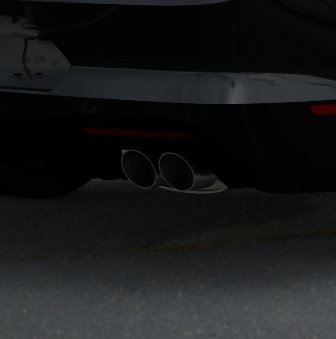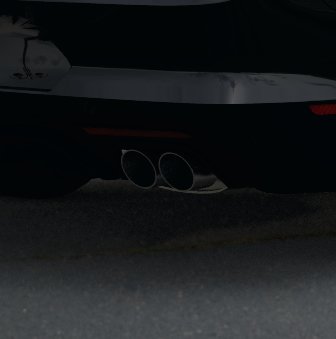
Tony77
Members-
Posts
78 -
Joined
-
Last visited
Everything posted by Tony77
-
Astrophoto stacking
Tony77 replied to Tony77's topic in Pre-V2 Archive of Affinity on Desktop Questions (macOS and Windows)
Hi NathanC thank you for the support -
Astrophoto stacking
Tony77 replied to Tony77's topic in Pre-V2 Archive of Affinity on Desktop Questions (macOS and Windows)
Hello yes I have seen this video and in one section it talks about what I am looking for but it clearly says that the second set must be aligned by hand, but its second set is completely shot upside down and out of alignment. My second set of shooting is a few degrees moved due to repositioning, I wanted to know if the software can make up for that small difference by making a single stack with two "slightly" misaligned sets. -
Astrophoto stacking
Tony77 replied to Tony77's topic in Pre-V2 Archive of Affinity on Desktop Questions (macOS and Windows)
Anyone who has any information for me? -
Hi guys I have a manual winding mechanical type astro-tracker that takes up only 1 hour of integration, to do more hours of integration you need to reload the timer and manually return to the position it assumes after one hour of integration and so on for the following hours. . Obviously the position will not be precise so I have a set of type 50 photos aligned and others and 50 slightly shifted due to the timer reload time and subsequent rotation of 15 ° back to find the position after 1 hour. My question is does the program manage to do all an alignment if I load a set of 50 photos from the first shot and 50 from the second?
-
Lab sharpness
Tony77 replied to Tony77's topic in Pre-V2 Archive of Affinity on Desktop Questions (macOS and Windows)
Thanks Kirk you were very clear I usually prefer to use this LAB method to not have halos around the edges .... but you have a tip on sharpness I gladly accept it. -
Lab sharpness
Tony77 replied to Tony77's topic in Pre-V2 Archive of Affinity on Desktop Questions (macOS and Windows)
Hi kirk yes I understood that it could be something similar to your explanation (among other things very precise and professional) I apply a lab sharpness by selecting the brightness channel of the lab color space and then I invert the level .... but this last operation leaves me some doubts honestly ... as I saw it on a video tutorial where they apply the sharpness through the lab method. As suggested by another user above ... also you recommend to select the brightness channel and avoid inverting it ??. I had never noticed the sharpening mask but in fact it looks like it should be reversed I attach how the mask looks on my rendering -
Lab sharpness
Tony77 replied to Tony77's topic in Pre-V2 Archive of Affinity on Desktop Questions (macOS and Windows)
I have attached those three photos because the problem occurs to me with images with dark colors However on my monitor the difference is evident -
Lab sharpness
Tony77 replied to Tony77's topic in Pre-V2 Archive of Affinity on Desktop Questions (macOS and Windows)
It is the same as I saw .... but there are others that apply the lab sharpness only to the pixels of the brightness channel of the lab color space ... and then re-convert to rgb 16 -
Lab sharpness
Tony77 replied to Tony77's topic in Pre-V2 Archive of Affinity on Desktop Questions (macOS and Windows)
Hi .... I saw some videos where they loaded the pixels of the brightness channel and then reversed the level .... honestly I also had some doubts but I have seen more than one But now I have seen one that I had never seen and in fact they do not make that passage -
Lab sharpness
Tony77 replied to Tony77's topic in Pre-V2 Archive of Affinity on Desktop Questions (macOS and Windows)
Hello I redid the test with larger files On the monitor I see that the final file of the reconversion has colors that turn to light blue in the shadows .... this is the problem that I notice if I apply a lab sharpening and then re-convert the colors to 16 or 8 bit RGB I redid the test with larger files -
Lab sharpness
Tony77 replied to Tony77's topic in Pre-V2 Archive of Affinity on Desktop Questions (macOS and Windows)
Hi to explain better I am attaching the tests I did .... I do not know why it happens but in the end when I want to apply the unsharp mask Lab the final image has a different color in the shadows. The first image is an Adobe rgb 1998 RGB / 8 Jpeg, the second is the same converted to lab and the last is the conversion to RGB / 8 ... as you can see the output colors are different. Does anyone know how to avoid this inconvenience ... otherwise I would have to use a normal unsharp mask without converting the colors to Lab and then converting them back to rgb 8 -
Lab sharpness
Tony77 replied to Tony77's topic in Pre-V2 Archive of Affinity on Desktop Questions (macOS and Windows)
Thanks for the reply I use lab sharpening because it "seems" to work better in the brightness areas of the image .... it says it looks like from what I could see .... but yesterday I noticed that in the re-conversion to adobe rgb some areas have a color different ... especially in the shadows. -
Hello, I was applying the lab method for sharpening to an image, here are the stepsI took Converting from adobe rgb / 8 to Lab 16 Select brightness channel -> load pixel selection Invert selection unsharp mask radius 0.5 factor 1 deselect reset channels conversion from Lab16 to adobe rbg / 8 I have been using this method for a long time but only tonight I noticed that once I did these steps when I return to rbg / 8 the colors are completely different I attach an affinity file with the three outputs Abobe rgb8 initial Lab conversion 16 Convert back to Adobe RGB / 8 I didn't apply sharpening on purpose to show that the colors are different even without other changes Turning on and off the levels you can clearly see that the lab level and the level of the re-conversion in adobe rgb8 are identical ... practically in the shadows above all the colors are different Can anyone tell me why this happens? Lab sharpness.afphoto
-
Hi I have a problem with Affinity Photo .... I tried to create a gigapixel format of 12 TIFF images of 16 mpx each. Joining them together comes out a file of 133 mpx and 890 mb .... when I save it in Affinity photo to modify it it reaches 3 gbyte and the program crashes and I have to wait several seconds for it to work again. Obviously I tried to merge 12 Jpegs and the file is much smaller and workable but it has only 8 bits .... I used TIFF to be able to work in 16 bits. I am aware that the starting file in TIFF (Jpeg is much smaller) is big but how could I do in this case? .... what kind of workflow do you use in these situations?
-
Affinity licenses
Tony77 replied to Tony77's topic in Pre-V2 Archive of Affinity on Desktop Questions (macOS and Windows)
Thanks Alfred -
Affinity licenses
Tony77 replied to Tony77's topic in Pre-V2 Archive of Affinity on Desktop Questions (macOS and Windows)
Ok as I understand I can also install it on three PCs ... the important thing is that they are used only by me for commercial purposes .... do I understand correctly? -
Affinity licenses
Tony77 replied to Tony77's topic in Pre-V2 Archive of Affinity on Desktop Questions (macOS and Windows)
So practically only one license can be used for commercial purposes .... if this license is inserted on other PCs always in my possession .... they can be used but not for commercial purposes. Basically a commercial license = 1 pc Even if "I knew" that usually a program can be installed both on a fixed and on a notebook and be both valid for commercial purposes .... obviously installed on other PCs it is no longer valid commercially .... this usually it happens with the other software that I use -
Hello, I should change workstations soon because my pc is having problems with the motherboard, On the PC that is having problems I installed all the Affinity suite (Photo, Designer and Publisher) regularly purchased. I would like to know how I can deactivate the licenses from this PC and activate them on the new one. I also wanted to know if the 3 licenses can be installed not only on a fixed PC but also on a laptop ... or should other licenses be purchased? Regards
-
I mean the automatic panels of other photo editing programs .... panels that create masks from brightness levels and then through a slider you change the mask to expand the editing area .... example the videos on the Tk panel that seems to me do this. I understand that there is no such automatic panel but I wanted to know how to do the same thing in a less automatic but effective way anyway I hope I have been clear now








